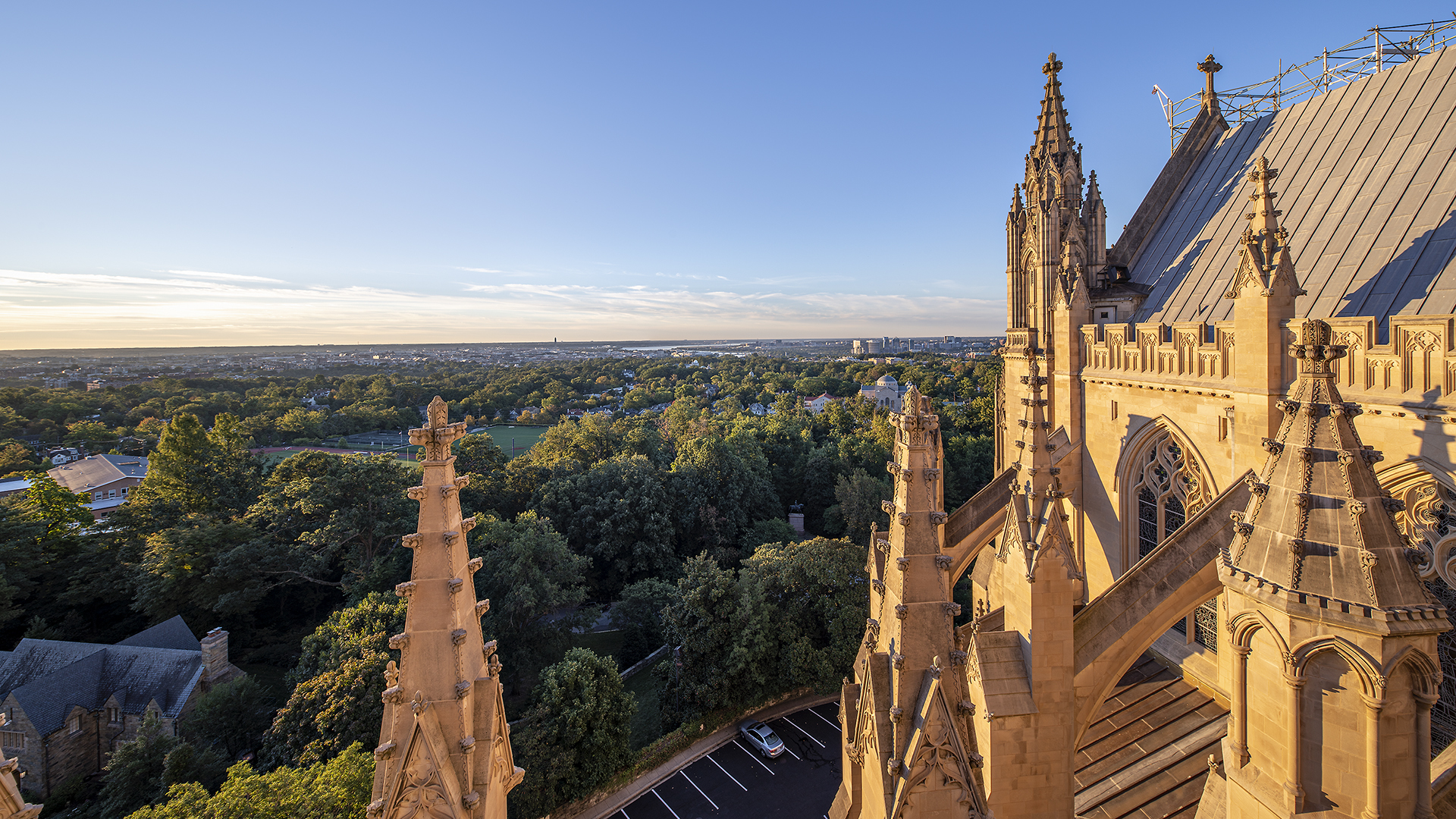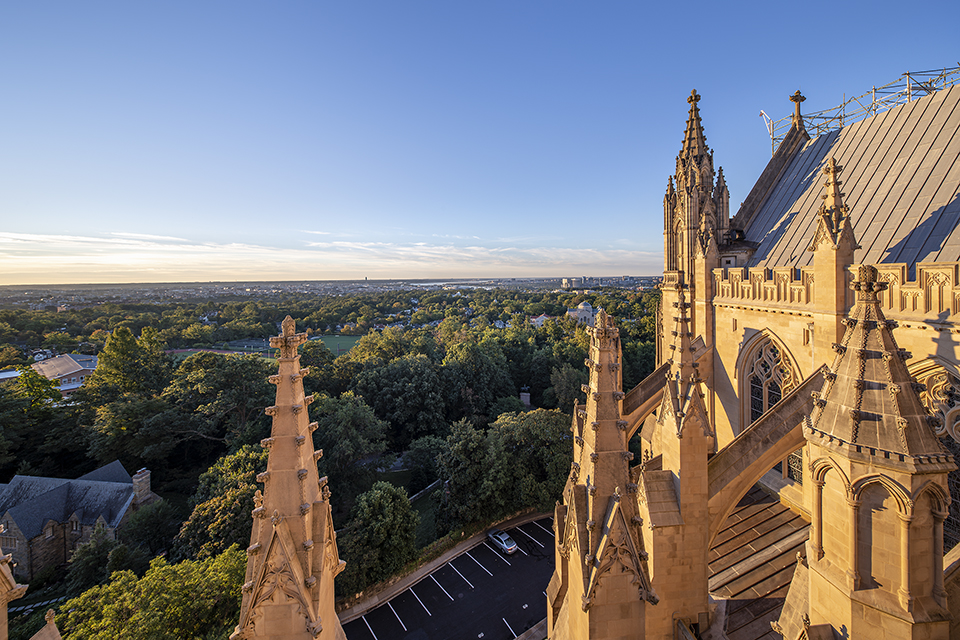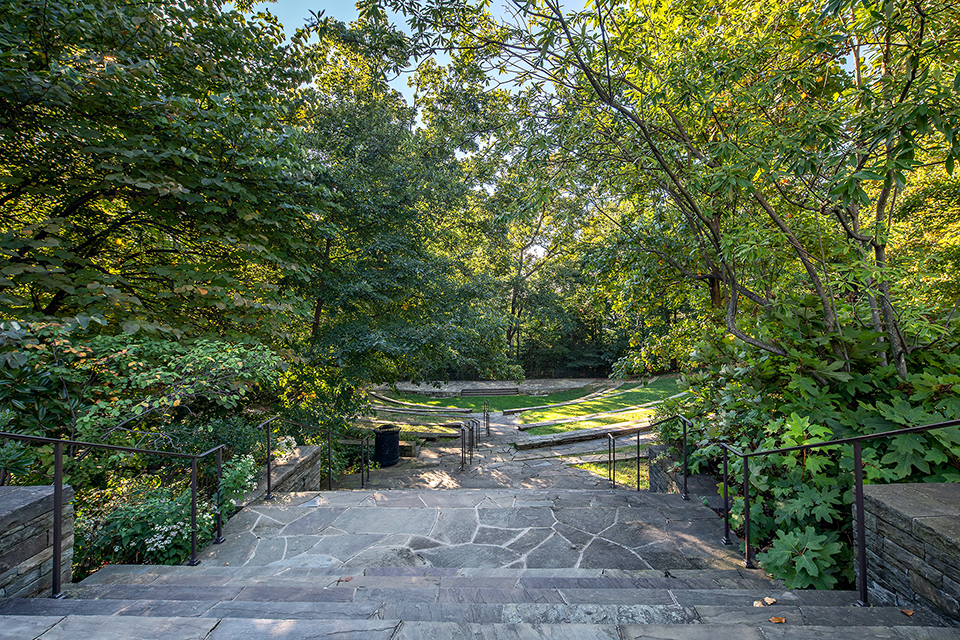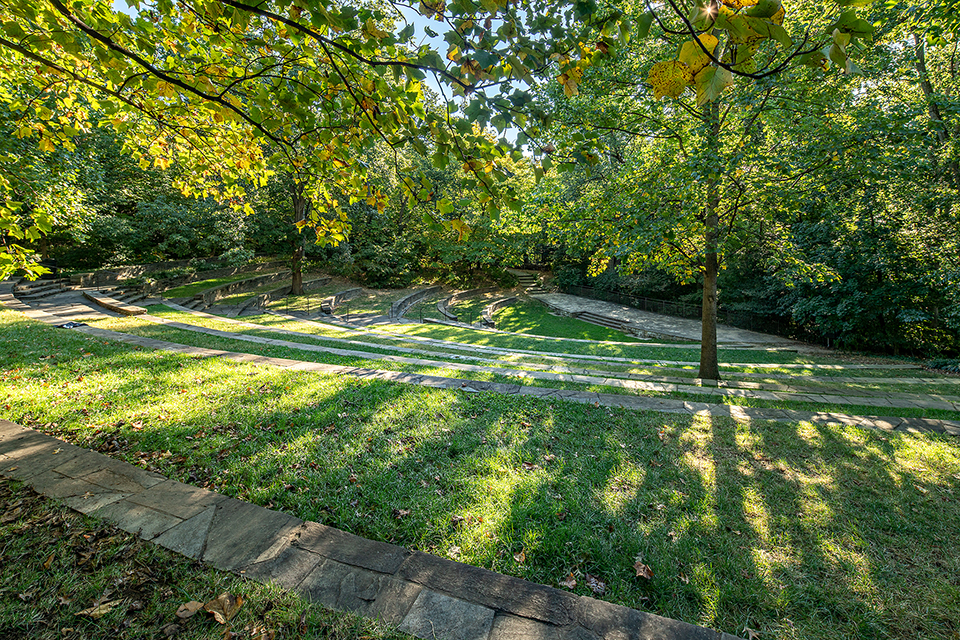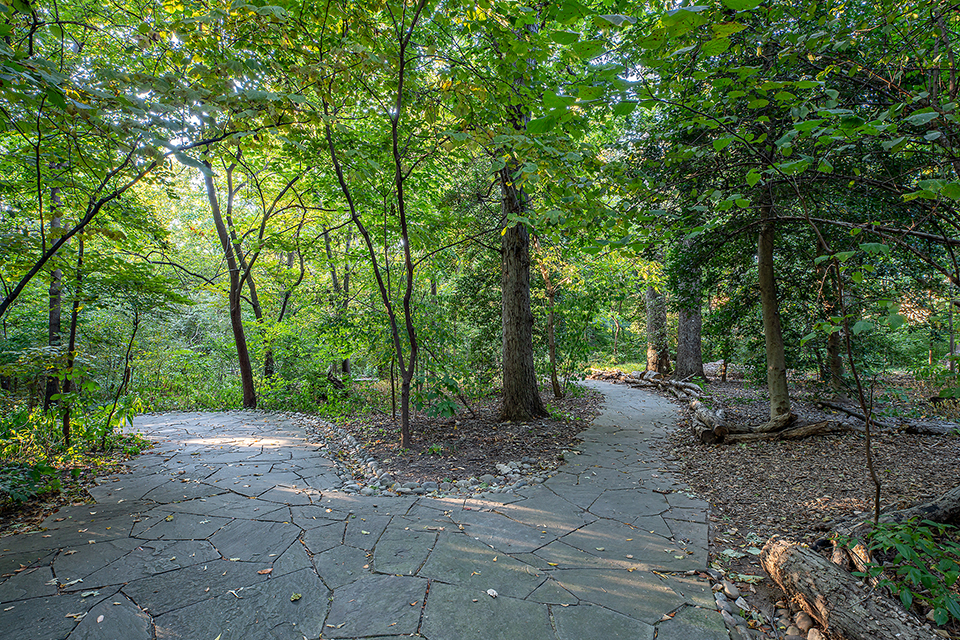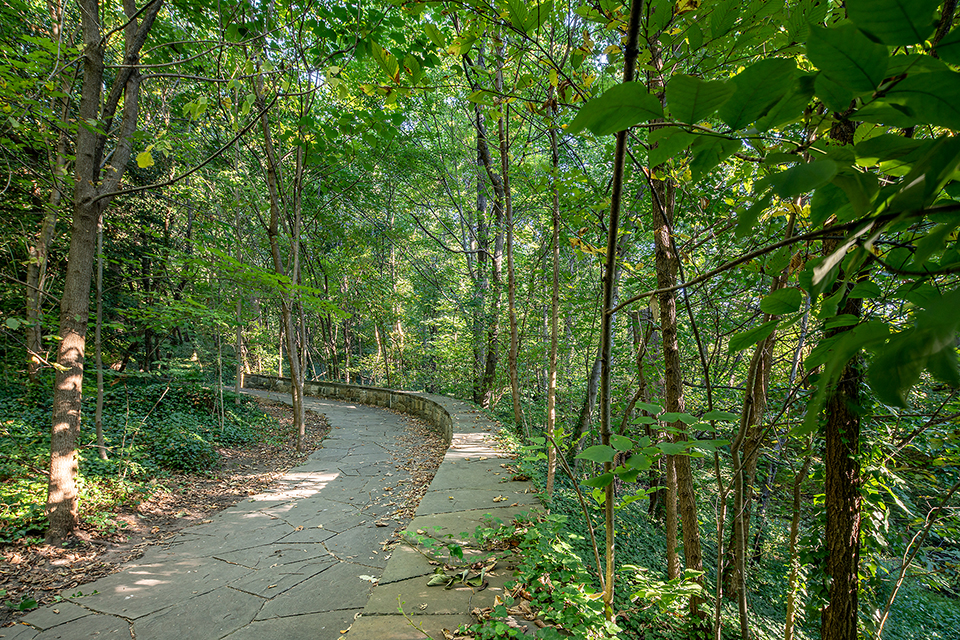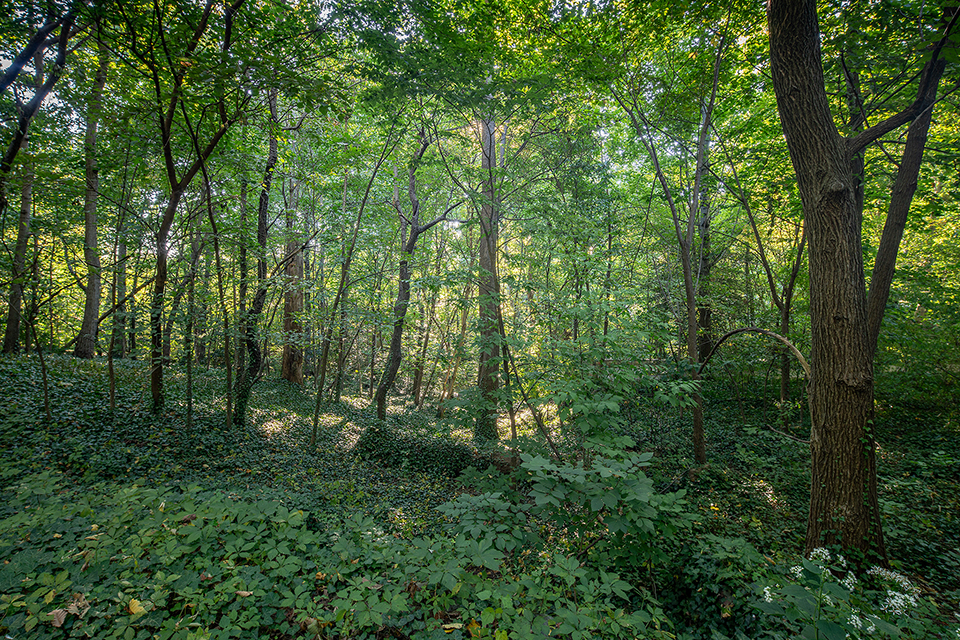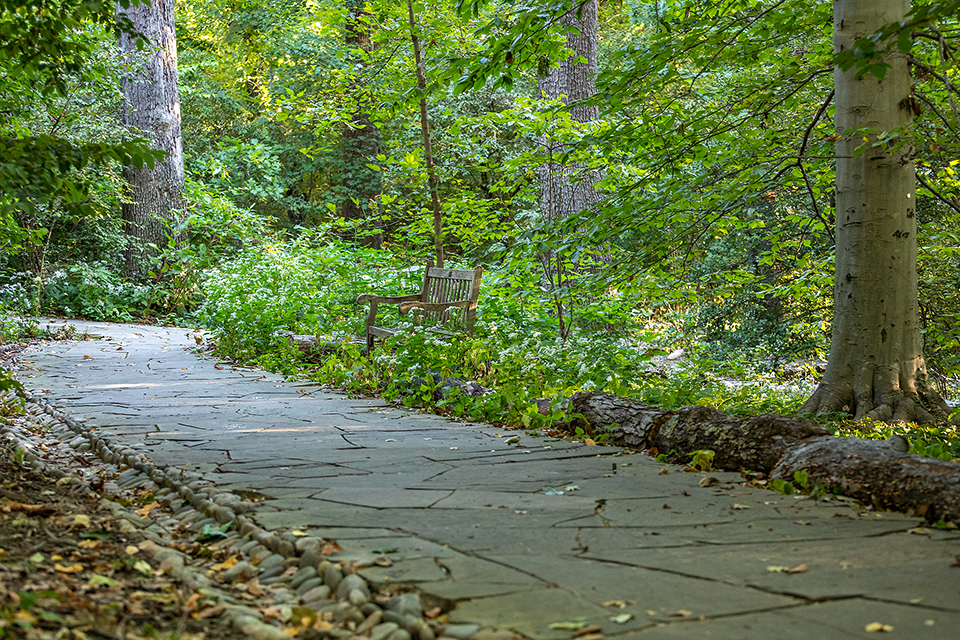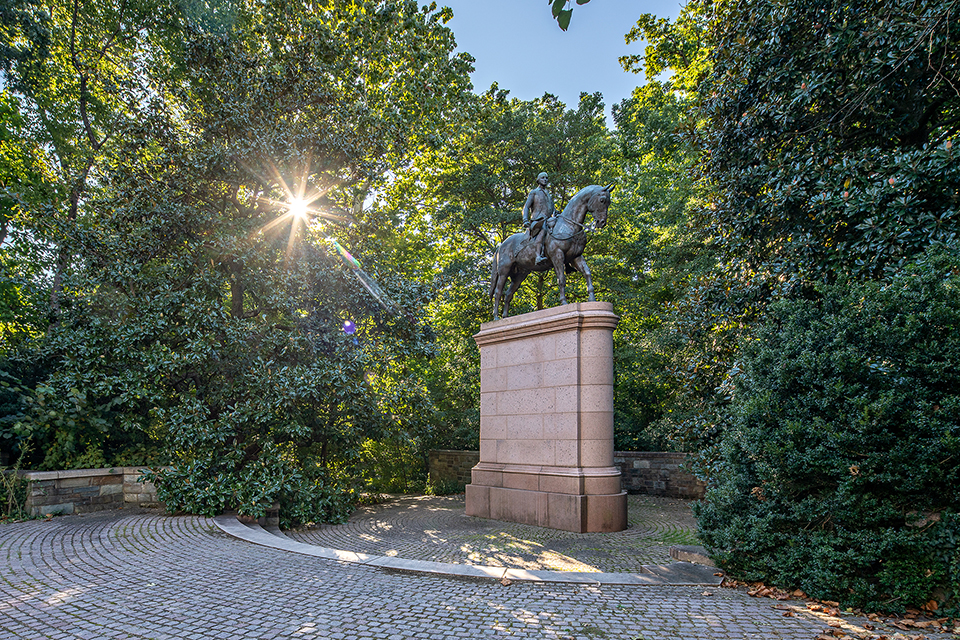Frederick Law Olmsted, Jr.’s, comprehensive plan for the 59-acre grounds of the Washington National Cathedral included the preservation of an existing five-acre woodland, now known as the Olmsted Woods. A critical component of the Potomac River Basin watershed system, this beloved landscape has suffered escalating damage from drought, stormwater runoff, and flooding events in recent years, adding stress to both the watershed and the woodland’s native plants and mature trees.
History
Initially hired in 1907 to consult on the grounds for the Washington National Cathedral’s Choir School, Frederick Law Olmsted, Jr., with Olmsted Brothers, eventually expanded his purview to include a comprehensive plan for the 59-acre campus of the Washington National Cathedral. Executed from 1907 to 1928, his plan included internal roadways, locations for institutional buildings, a series of open spaces and gardens, enhancement of an existing amphitheater for outdoor services, and the preservation of an existing five-acre woodland, now known as the Olmsted Woods.
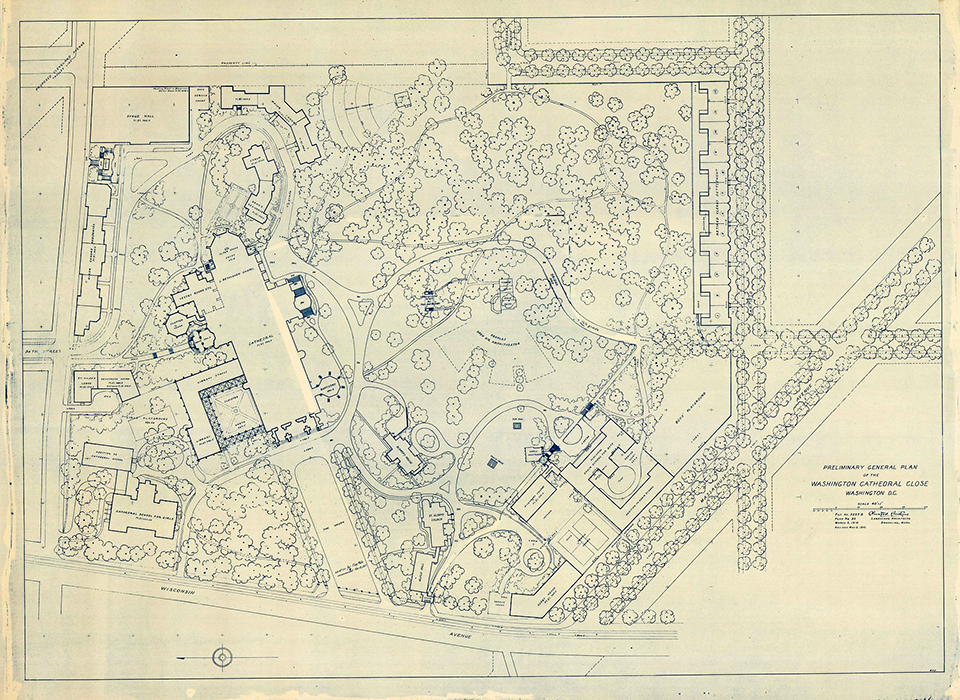 Preliminary General Plan of the Washington Cathedral Close, 1910. Photo courtesy of Frederick Law Olmsted National Historic Site.
Preliminary General Plan of the Washington Cathedral Close, 1910. Photo courtesy of Frederick Law Olmsted National Historic Site.
Before European colonization, an extensive oak and beech forest covered the area of Mount Saint Alban, the high point of a piedmont plateau above the Potomac River on which the Cathedral sits. Much of the surrounding area has been extensively developed, and the Cathedral grounds, including the vestigial five-acre woodland, together with the nearby Glover Archbold Park and Rock Creek Park, contain the entire remaining natural area serving as a critical wildlife habitat and watershed system for the Potomac River Basin.
Olmsted, Jr., was particularly drawn to the woodland and envisioned its preservation as a natural area as a crucial component of the Cathedral’s master plan. “The great sweeping branches of the trees seem to brush off, as it were, the dust of the city, so that one at last reaches the Cathedral cleansed in mind and in spirit,” he wrote. In Olmsted, Jr.’s, plan, the south slope was dedicated to open space, with a winding Pilgrim Way providing a calming passage through a stream-strewn woodland to the assemblage of ecclesiastical buildings at the hill’s summit. As more congregants and visitors to the Cathedral began to travel by car, the pedestrian route designed by Olmsted was mostly abandoned in favor of the west entrance, which gave preference to vehicular movement. However, the Olmsted Woods remains a beloved and beneficial Washington, D.C., cultural landscape. Frequently enjoyed by visitors and pupils of the Cathedral’s three schools, the more rugged character of the woodland district provides a more intimate and immersive experience than the remainder of the campus, while also benefitting the surrounding community by diminishing localized air pollution, reducing the urban heat island effect, and providing habitat to insects and animals.
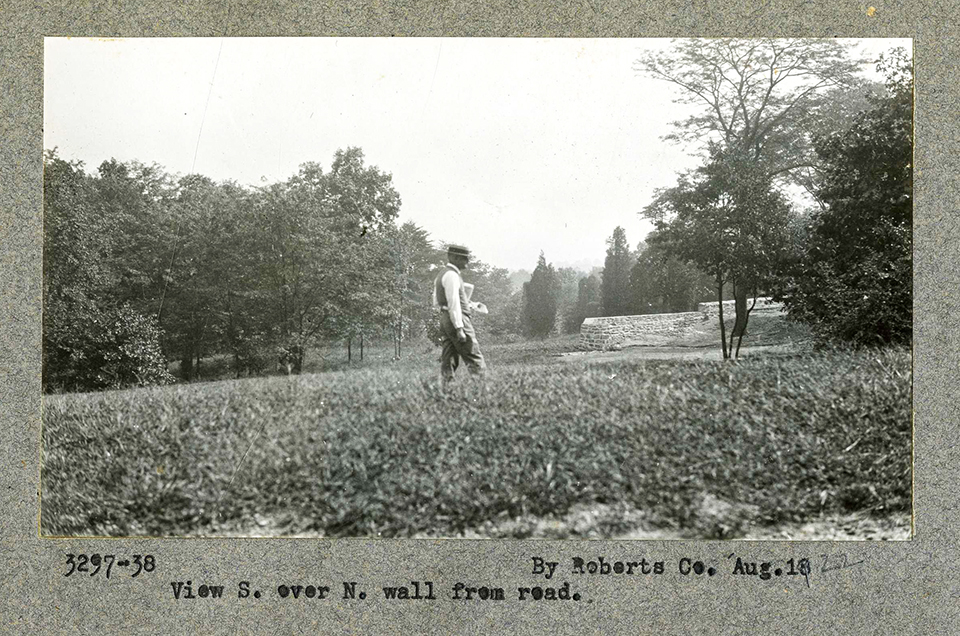 Washington National Cathedral Grounds. Photo courtesy of Frederick Law Olmsted National Historic Site.
Washington National Cathedral Grounds. Photo courtesy of Frederick Law Olmsted National Historic Site.
The non-profit All Hallows Guild, founded in 1916 to steward the Cathedral’s grounds, had as one of its early members Florence Brown Bratenahl, the wife of the Cathedral’s second dean. She worked alongside Olmsted, Jr., from 1922 to 1928 on several landscape features, including the Pilgrim’s Way and the Bishop’s Garden. In its first decades the Guild raised funds to purchase mature specimen trees to populate the grounds, an effort Olmsted hoped would create a feeling of permanence and antiquity. A grant enabled the Guild to complete the Pilgrim’s Way, sometimes called the Pilgrim Path, in 1955. The Guild continues to support and collaborate with the Cathedral’s horticultural staff to maintain the grounds, including the Olmsted Woods.
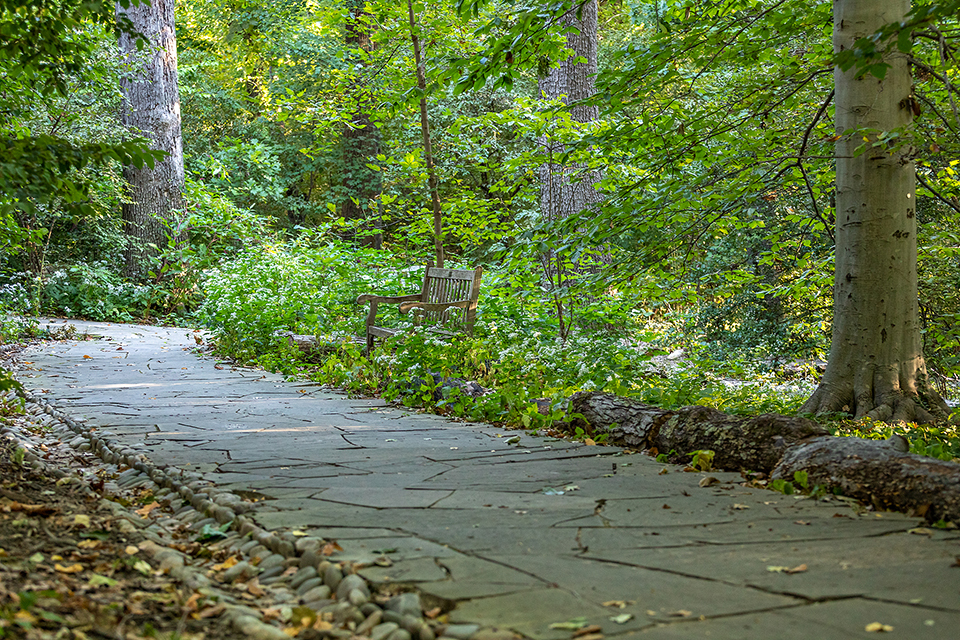 Olmsted Woods, Washington National Cathedral, Washington, D.C., 2022. Photo by Allen Russ.
Olmsted Woods, Washington National Cathedral, Washington, D.C., 2022. Photo by Allen Russ.
After several decades of project work that was not afforded a comprehensive perspective, a master plan was initiated in 1997 by a team including Andropogon Associates, a Philadelphia-based landscape architecture firm that has formed a long-term partnership with the Guild. From 2000 to 2008, measures were implemented to improve the woodland area’s stormwater management and biodiversity while maintaining public access. As part of these efforts, the design team paved the Pilgrim’s Path in stone and retraced its path through the woods to minimize its impact on sensitive areas vulnerable to flooding and erosion. Additional vegetation management and renewal strategies included aeration for tree roots, the introduction of stormwater infiltration pits, and new dedicated seating areas that protect sensitive plants and ecologies while enhancing the visitor experience.
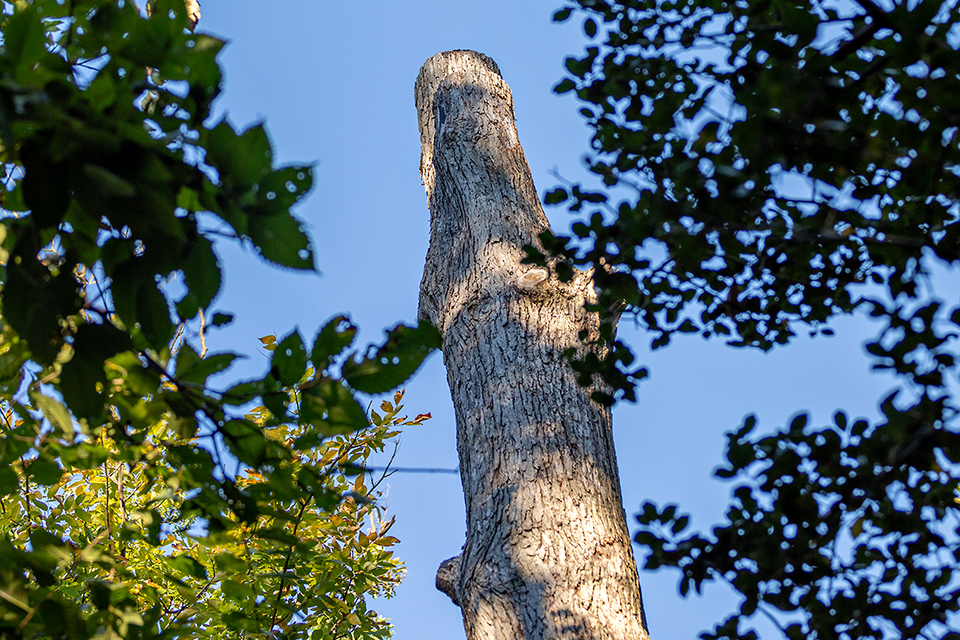
Photo by Allen Russ.
Threat
In recent decades, the compounding effects of climate change, ever-encroaching development, and increased use by congregants, pupils, and visitors have threatened the woodland’s sustainability. The expansion of impervious surfaces, combined with more extreme bouts of both drought and flooding, has damaged native plants, caused significant erosion, and added stress to both the watershed and the mature trees of the Olmsted Woods. Many canopy trees have been lost, significantly altering the biodiversity of the Woods and Olmsted’s design intent.
According to findings published by Andropogon in 2021, “for better or for worse, the ecological and social climate of Olmsted’s era is long gone, and what survived or thrived in that context is no longer feasible in many cases. In order to protect the legacy of Olmsted landscapes while ensuring their longevity in an era of climate change and social change, designers and land stewards must look beyond the traditional approaches.”
After a fallen oak damaged a footbridge connecting Pilgrim Path with Pilgrim Road in 2012, Andropogon initiated a review of the previous interventions from the early 2000s, and determined that stormwater still posed a significant threat. Several new recommendations were made, including the addition of native groundcover and the removal of invasive species, construction of new dams, and a strategically phased planting of canopy trees. Since this assessment, the decline of the Olmsted Woods’ trees has accelerated. In 2021 the All Hallows Guild commissioned the Morris Arboretum of the University of Pennsylvania to complete an inventory of existing trees and GIS-mapped data that included species, age, risk, and maintenance recommendations. Of the 77 oak trees inventoried, seven percent were found to be in poorer condition than would be expected for their age and environmental conditions, with a life expectancy of fifteen years or less. Trees are the bellweather for the general health of the woods, and this decline signals that action must be taken now to prevent the Olmsted Woods from suffering extensive, irreparable damage from climate change and the impacts of increased visitation.
What You Can Do to Help
Washington, D.C. area residents are encouraged to volunteer to work with the Cathedral Horticulture staff to assist with the removal of invasive understory plants (e.g., English ivy) found throughout Olmsted Woods. Removal of invasive species will allow native plants to re-establish and is critical for supporting a healthy and more diverse woodland habitat.
To get involved, fill out the volunteer interest form with All Hallows Guild.
The All Hallows Guild offers many ways to support the maintenance and stewardship of the Olmsted Woods.
Donate to the All Hallows Guild’s Olmsted Woods Fund.
Another way to participate is to dedicate a memorial tree, or make a memorial gift to the Landscaping Fund in honor of a loved one.
The All Hallows Guild continues to explore ways to engage the next generation of Olmsted Woods stewards by drawing attention to escalating issues resulting from climate change, the impacts of increasing visitation, and a densifying urban context that is resulting in canopy tree loss and the expansion of paved surfaces. With increased support and volunteers the Olmsted Woods can safely and responsibly promote increased access and visitation while serving as a critical educational resource for schools and parents looking to introduce concepts of sustainability and to live in harmony with nature in the city.
Find out more about responsible stewardship of the Potomac River Basin here.
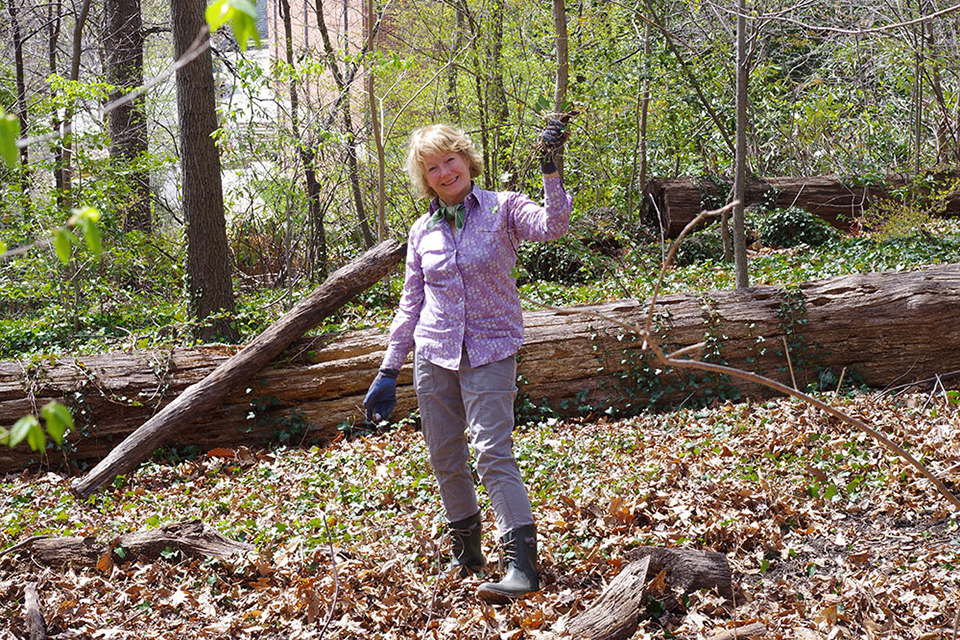
-
Photo courtesy of All Hallows Guild.
